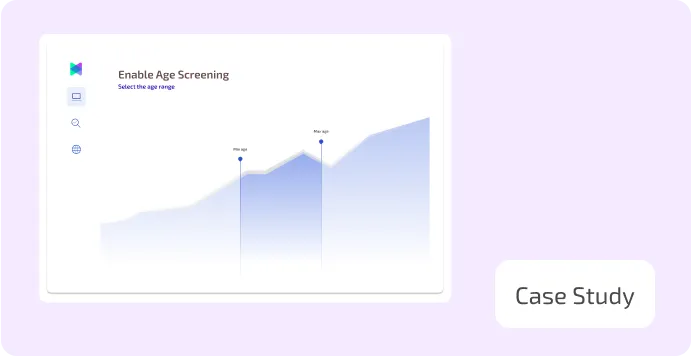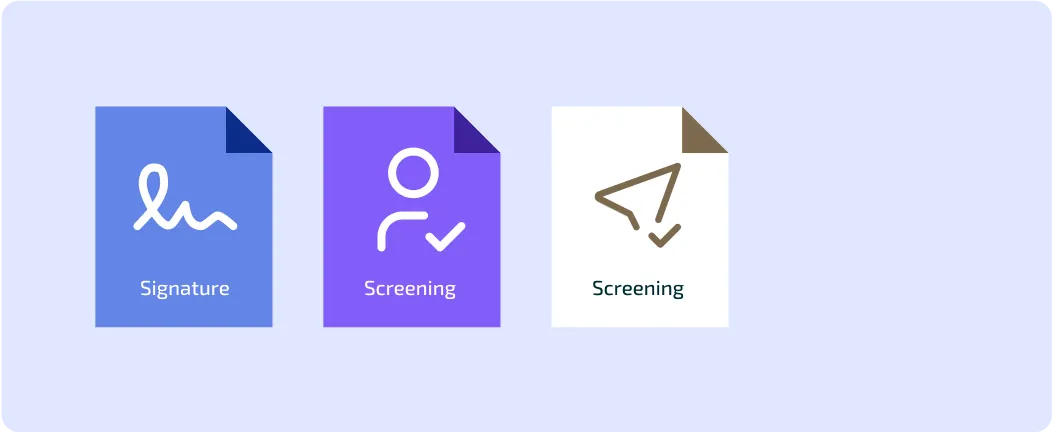.webp)
Published on
June 24, 2025
Declining Risk Profiles in AML and Customer Monitoring
.png)
Accelerate AML Compliance: Meet Regulatory Demands with 80% Less Setup Time
.svg)
.svg)
In AML compliance, a declining risk profile happens when a customer's risk level decreases over time. This can be due to changes in the customer’s behavior, transaction patterns, or results from further checks. A risk profile is an assessment of how risky a customer is based on factors like their financial activities, location, and business type.
A declining risk profile shows that the customer’s activities have improved, lowering the risk of money laundering or other financial crimes. This could be from better transparency, fewer suspicious activities, or more responsible business practices by the customer.
Monitoring and updating risk profiles is important for financial institutions to stay compliant with AML regulations and avoid being involved in financial crimes.
Example:
Scenario:
Firm X, a large bank, has a customer, ABC Trading Ltd., a business involved in international trade. Initially, ABC Trading Ltd. had a high-risk profile because:
- It made large transactions to high-risk countries.
- It had an unclear source of funds for several large payments.
- There was no clear information on the company’s ownership structure or who the beneficial owners were.
- Previous reports raised red flags.
Because of these factors, Firm X classified ABC Trading Ltd. as high risk and applied enhanced due diligence (EDD) procedures, including checking the company’s operations and verifying its financial history.
Over the next few months, ABC Trading Ltd. made changes:
- It started providing clear documentation for its funds.
- The company improved its compliance policies, updated its KYC information, and clarified its ownership structure.
- It shifted its transactions to lower-risk countries and started following more typical industry practices.
After this, Firm X found that the suspicious activities related to ABC Trading Ltd. had declined significantly, and the company’s actions now matched typical trade industry norms.
Firm X then updated ABC Trading Ltd.’s risk profile, lowering it from high risk to medium risk. This is a declining risk profile, meaning the risk of financial crime had decreased.
What Happens Next:
- Firm X continues to monitor ABC Trading Ltd. with routine KYC checks to ensure the positive changes stay consistent.
- The updated medium-risk classification meant that Firm X no longer needed to apply enhanced due diligence (EDD), but still monitored the customer closely for any suspicious activity.
Key Takeaways:
- A declining risk profile happens when a customer’s risk level decreases due to improvements in their behavior or business practices.
- This allows financial institutions to adjust their AML monitoring and compliance efforts according to the customer’s current risk.
- The example shows how ABC Trading Ltd. moved from high risk to medium risk, based on changes in its behavior and operations.
Streamline Compliance: Achieve 80% Faster Setup for Fraud Prevention
.svg)
.svg)

How Aseel reduced onboarding time by more than 87% using FOCAL
Learn how FOCAL empowered Aseel to achieve new milestones.


Mastering Fraud Prevention: A Comprehensive Guide for KSA and MENA Businesses
51% of organizations fell victim to fraud in the last two years, don't be caught off guard, act proactively.


Featured blog posts

.png)
Declining Risk Profiles in AML and Customer Monitoring
Explore what a declining risk profile means in AML, how improved customer behavior lowers financial crime risk, and why banks must monitor and update risk.
.webp)
.png)
Declining Risk Profiles in AML and Customer Monitoring
Explore what a declining risk profile means in AML, how improved customer behavior lowers financial crime risk, and why banks must monitor and update risk.
.webp)
.png)
Declining Risk Profiles in AML and Customer Monitoring
Explore what a declining risk profile means in AML, how improved customer behavior lowers financial crime risk, and why banks must monitor and update risk.
.webp)





AI-Driven Precision in Fraud Risk and AML Compliance



.svg)
.png)





.svg)

_FastestImplementation_Small-Business_GoLiveTime.png)

_HighPerformer_Small-Business_HighPerformer.png)
_Leader_Leader.png)



%20(1).webp)